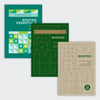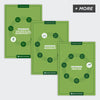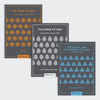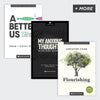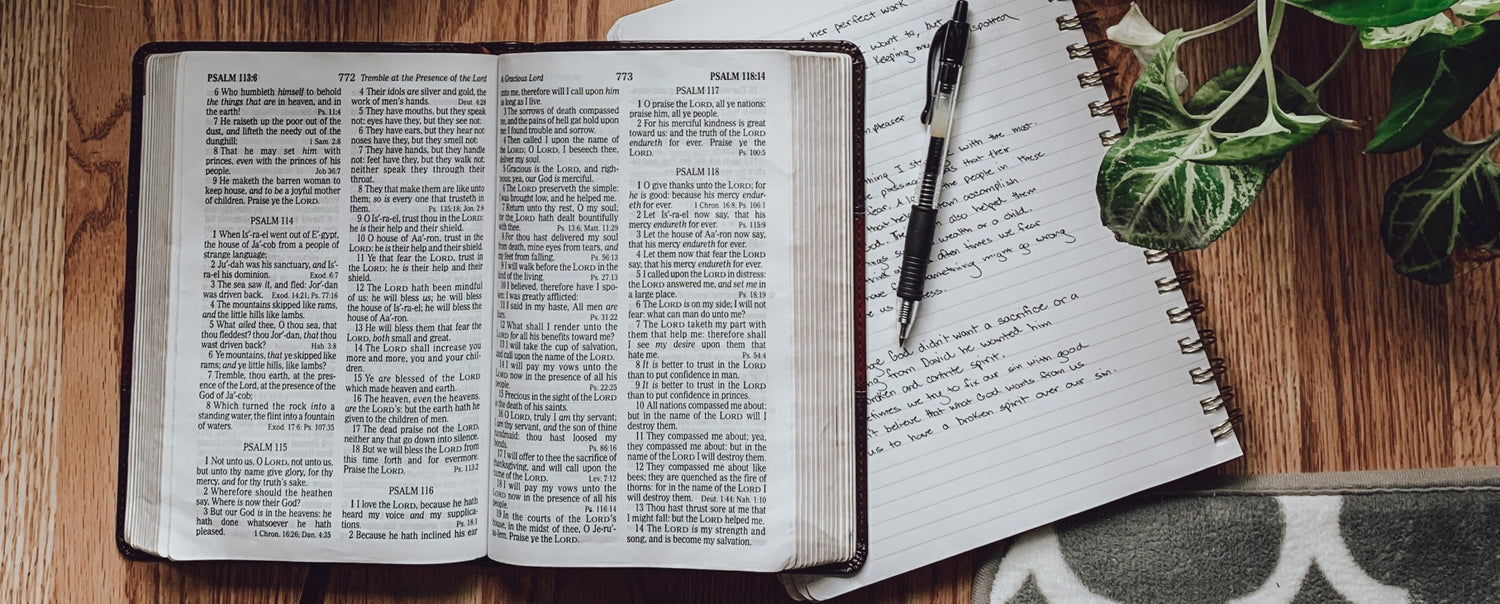When it comes to reading the Bible, most of us can admit two basic realities: First, it’s important and valuable. Second, it’s often a difficult habit to start or sustain. As leaders, helping people in your small group, ministry area, or church, develop an ongoing rhythm of daily devotion is among the most rewarding goals that you can set and strive toward. The same is true for us as individuals, too.
Research shows a strong correlation between frequency in Scripture and other healthy Christian beliefs and practices. For example, beliefs in God, heaven, hell, truth, and objective morality as well as participation in corporate worship, personal prayer, and study groups all increase sharply among people who spend time in Scripture at least once a week. On top of all that, people spending consistent time in Scripture also report a higher sense of peace and wellbeing, awe about the universe, and guidance in right and wrong (Pew Research). While study after study reveal similar findings, and even though most US adults hold a “high” view of Scripture, the majority never read it and only a small percentage read it regularly (Barna & American Bible Society). In fact, Millennials are most likely to have never read the Bible, and those who are most committed to a rhythm of daily devotion are over the age of 70 (Statista).
Tips for Developing a Rhythm of Daily Devotion
- Start small—This applies to both the length of time and of the Scripture. People should feel the freedom to ease into a rhythm with just a few minutes at a time. Try reading a psalm, a story from the gospels or other narrative books of the Bible, a paragraph or complete thought in an epistle or other non-narrative books, or even just a verse or two. A few of the tools below can help with this “small” step.
- Be consistent—By definition, the key to any rhythm is consistency. Find a time and place that works for you and the routines you already have in place. Can you wake up or arrive somewhere a few minutes earlier to have a few quiet moments before your day is in full swing? Can you stay awake or stay later to have a few moments at the end of your day? Maybe a natural break in your day is the best time to slow your thoughts and focus attention on God’s Word. For me, I sit in the same spot surrounded by the same cues each morning after the school rush with my kids but before the workday begins: chair, coffee, Bible, journal, and sometimes a devotional book or a record playing in the background. Whatever it is for you, find a rhythm.
- Use a tool—There are an infinite number of useful tools and resources to help you or someone you know to develop a rhythm of daily devotion. We’ll look at a sampling below, but the key is to have a plan that includes some kind of guide or resource.
Tools for Developing a Rhythm of Daily Devotion
- Devotional Books—As powerful as devotional books can be, they’re even more transformative when reading them with other people. Some churches select an “annual read” and encourage everyone to participate. If the church has an on-site bookstore or relationship with a local shop in the community, they can make it easy for people to swing by and pick one up, keeping plenty in stock. Imagine how the Spirit might speak and move when families, small groups, ministry teams, or entire churches spend time in the same passage of Scripture each day! Many denominations or networks produce devotional booklets at little or no cost to churches.
- Group Studies with Devotional Readings—Current Rooted Network resources (Rooted, Rooted Essentials, and Life In Rhythm) are designed for group discussion and experiences but also include personal readings for daily devotion between gatherings. While this emphasis on the rhythm of daily devotion is core to who we are and the resources we create as Rooted Network, you can browse any bookstore and find a group study that includes personal readings. (Get a free sample of Rooted, including the first two weeks of devotionals.)
-
Daily Bible Reading Plans—I’m a fan of reading and marking in my own physical Bible, even if using any of these other tools. To keep it simple, let’s split that phrase into two basic categories for physical Bibles and daily reading plans:
-
- Daily Bible—This option is a devotional Bible that is arranged into daily readings. These readings may be ordered chronologically, topically, or in any number of ways. I’d owned plenty of these Bibles over the years, but I distinctly remember reading through one with a youth ministry leadership team. To the earlier point, the power came not from the particular version we used, but rather the rhythm of doing it and the added accountability and excitement of doing it with others.
- Reading Plan—This option can be found in the front or back of many Bibles, a variety of websites or apps, or custom made by your church or ministry. This is something that I’ve done in various pastoral roles at churches I’ve served. A reading plan will help you cover all or most of Scripture in a set period of time. More liturgical traditions, like Anglicanism, utilize a lectionary that follows the Church calendar.
-
-
Apps—Again, too many options and features to cover, but want to hit a few highlights that I actually keep installed on my own phone/tablet.
-
- Free—Of course, the gold-standard for free Bible apps is by YouVersion. It’s been downloaded over half a billion times… yes, billion with a “b” (500,000,000+). In addition to all of the Bible versions and translations, it’s loaded with devotionals and reading plans that let you tap and track your progress (and even share with others in the app or via social media).
- Paid/Expandable—If you want a robust library at your fingertips, then the Logos app is your heavyweight champion. This is especially ideal for pastors, leaders, and the highly-invested layperson who loves digging into word studies, cross-references, and commentaries.
- Audio—There’s just something about hearing Scripture read over you. The apps mentioned above have audio options, at least for certain translations, but some apps specialize in audio. Dwell is a popular option, Lectio365 is especially helpful for praying along with the daily Scripture, and a long-time favorite is Streetlights with its emotional inflection set to musical beats.
-
- Text Services—One last tool that I love for churches is opt-in text messages. In addition to ministry announcements, parent communication, and giving-by-text, some churches have utilized the ubiquity of text messaging to help equip their people with daily devotionals. Of course, this could be done through email, but emails are more likely to get lost in a cluttered inbox than a text. A church that my family and I were a part of a few years ago sent texts every weekday with links to devotionals written by various staff members (using MojoTxt). What a beautiful way to continue ministering to people with the Word of God throughout the week!
Regardless of how you choose to practice your own time reading and reflecting on the Bible, prayerfully consider ways that you could also bless others in your circles of influence by helping them to develop a rhythm of daily devotion.
Have ideas? We’d love to hear them! Follow us on social media and comment on the related article or message us directly.
To read more about how Rooted practices the rhythm of Daily Devotion, click here.

Jeremy Maxfield is Director of Content for Rooted Network. A graduate of the University of Georgia and Beeson Divinity School, he has served in church and publishing roles for nearly 20 years. Jeremy and his family live outside of Chattanooga, TN.

